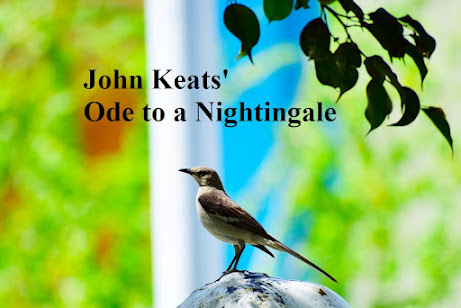"Ode to a Nightingale" by John Keats explores several themes, including:
1. Mortality and Transience: The poem reflects on the fleeting nature of life and the inevitability of death. The speaker is drawn to the nightingale's song as a way of escaping the weariness and impermanence of human existence. However, he also recognizes that the nightingale's song is a fleeting thing, heard only "in the stillness" and fading away as he comes back to himself.
2. Imagination and Escapism: The speaker is drawn into a state of trance-like absorption as he listens to the nightingale's song. He describes his experience as a kind of intoxication, as if he has drunk a "draught of vintage" that has transported him to a realm of "beauty that must die". He longs to escape from the transience of his own life and merge with the nightingale's immortal song, which seems to offer the promise of eternal beauty and joy.
3. Beauty and Aesthetics: The poem celebrates the beauty of nature and the power of art to transcend the limitations of human existence. The nightingale's song is described as a "harmonious madness" that inspires the speaker to imagine a world of perfect beauty and joy.
4. Nature: The nightingale is a symbol of nature, representing the beauty and power of the natural world. The poem celebrates the richness and complexity of nature, while also acknowledging its indifference to human suffering and mortality.
5. Human suffering: The poem acknowledges the reality of human suffering and the weariness and pain that are an inevitable part of the human condition. The nightingale's song offers a momentary escape from this suffering, but the speaker is aware that it is ultimately illusory and that he must return to the world of human existence.
6. Romanticism: The poem reflects the values and ideals of the Romantic movement, with its emphasis on the imagination, emotion, and individual experience. The speaker's encounter with the nightingale's song is a moment of intense personal transformation, in which he is transported to a realm of pure aesthetic experience and spiritual transcendence.
Overall, "Ode to a Nightingale" is a meditation on the human condition and the search for meaning and beauty in a world marked by suffering and impermanence. The poem explores the tension between the desire for escape and transcendence and the acceptance of the limitations and transience of human existence.


